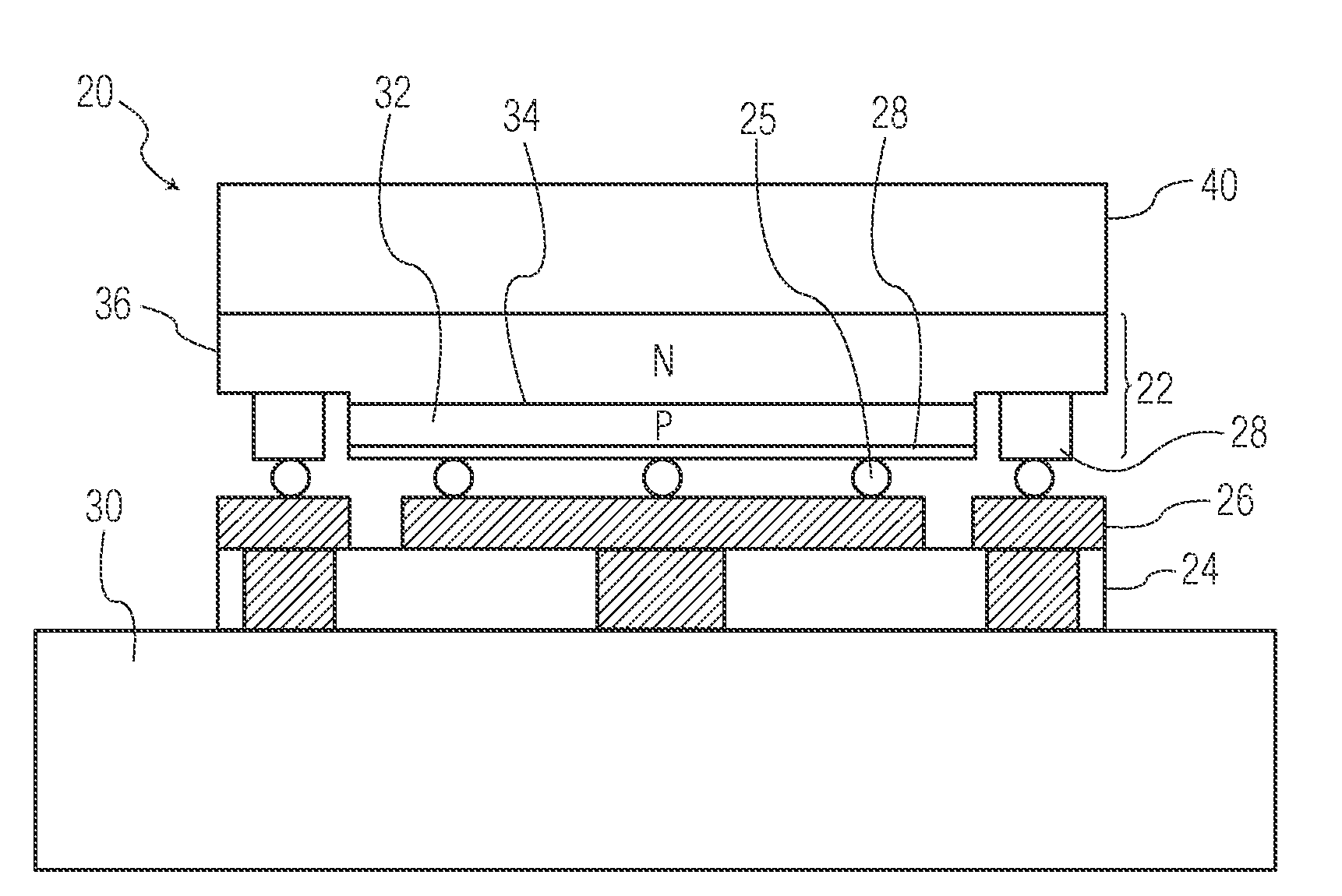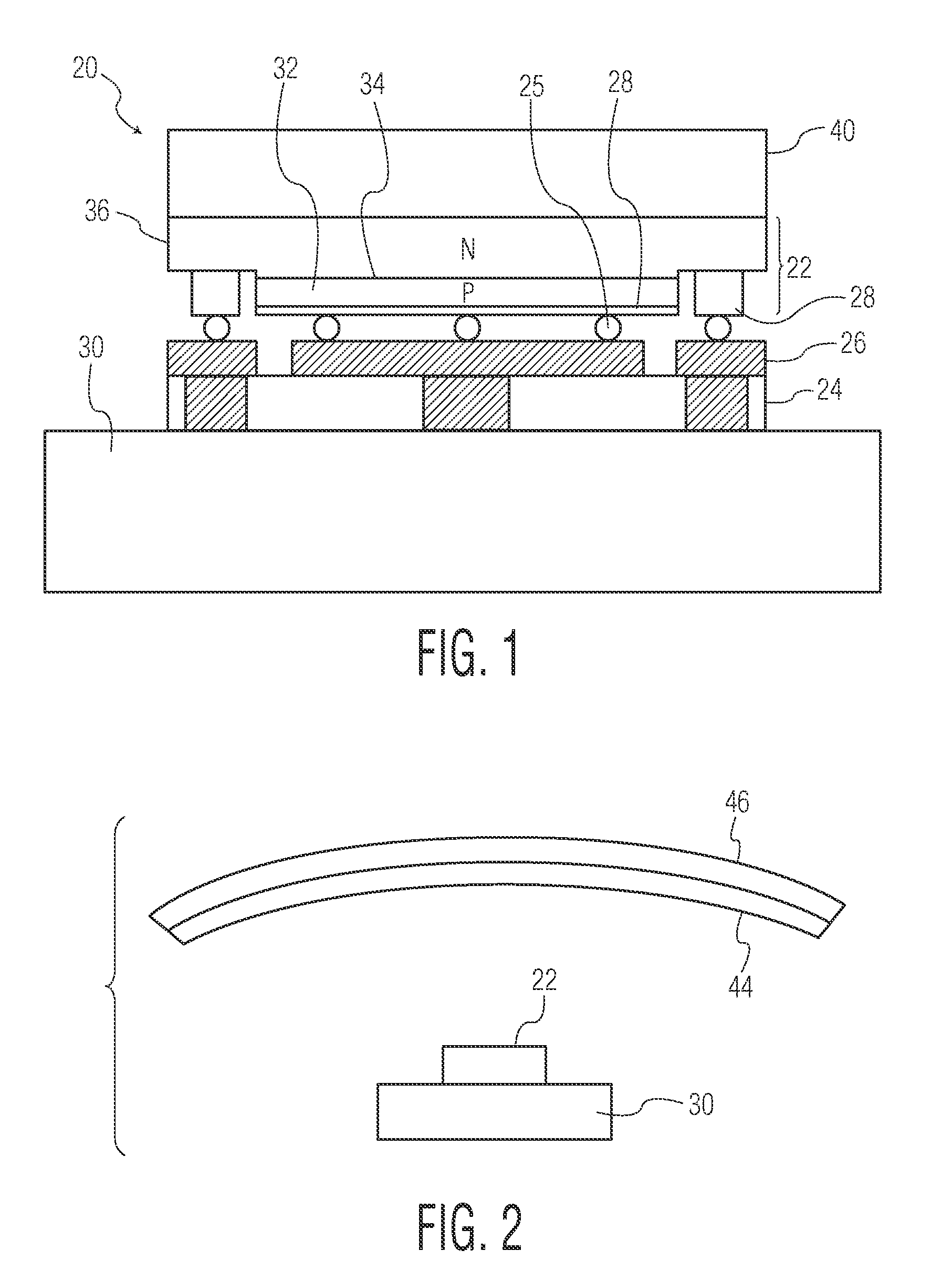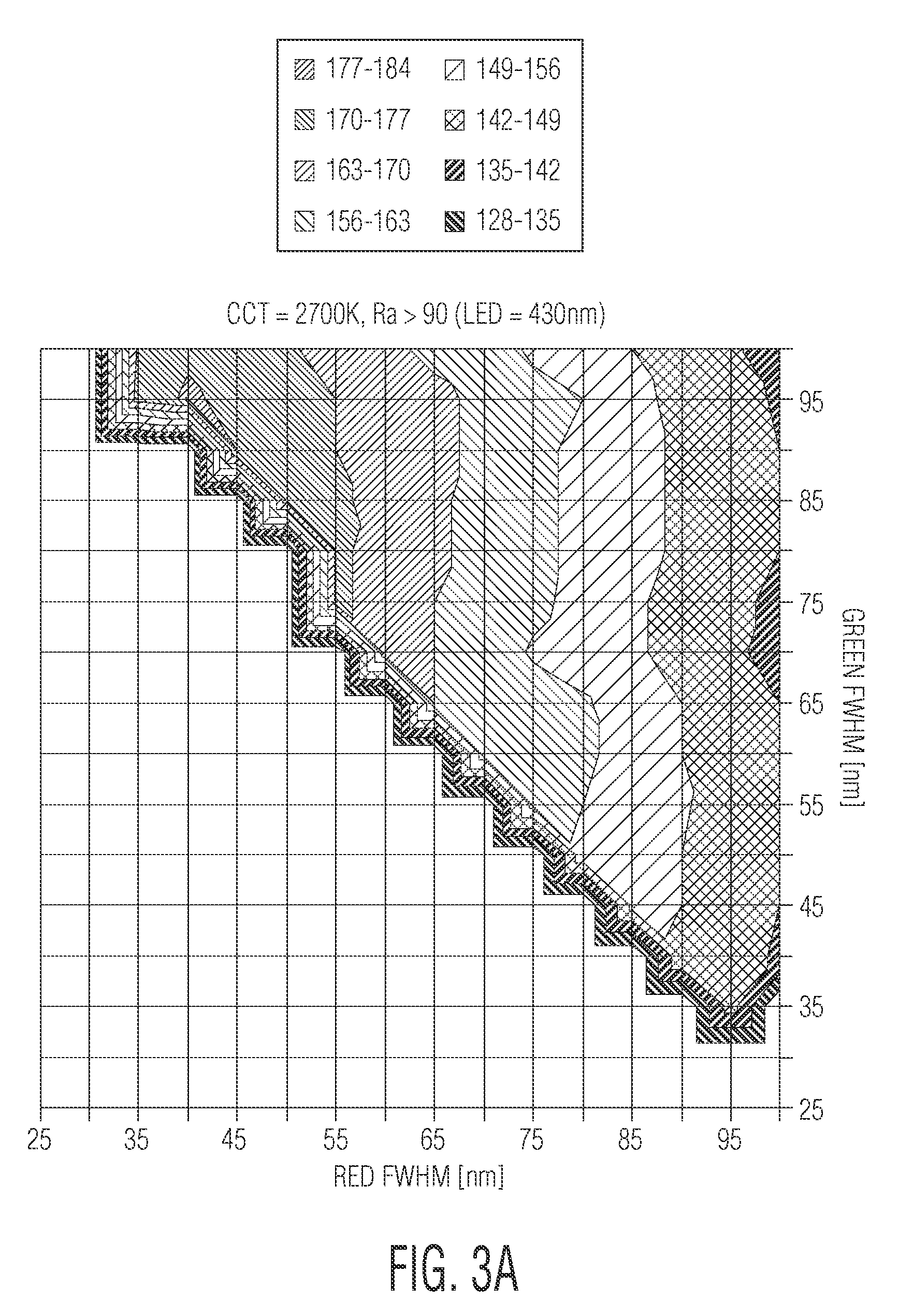Wavelength conversion for producing white light from high power blue LED
a technology of blue light and wavelength conversion, which is applied in the direction of energy-efficient lighting, luminescent compositions, sustainable buildings, etc., can solve the problems of insufficient efficiency of incandescent bulbs, insufficient luminous efficacy of incandescent bulbs, and poor color rendering of blue led and yag phosphor, etc., to achieve the effect of reducing energy consumption in the hom
- Summary
- Abstract
- Description
- Claims
- Application Information
AI Technical Summary
Benefits of technology
Problems solved by technology
Method used
Image
Examples
Embodiment Construction
[0036]FIG. 1 is a cross-sectional view of a white light LED 20 formed in accordance with one embodiment of the invention. A high power (>100 W / cm2) blue light LED die 22 is soldered or ultrasonically welded to a submount 24 using gold bumps 25 or any other means. The submount 24 has metal contact pads 26 on its surface to which the bottom electrodes 28 on the LED die are electrically connected. The LED die is a flip-chip. The contact pads 26 lead to other conductors formed on the periphery or underside of the submount 24 for connection to a printed circuit board 30, which is in turn connected to a power supply such as a current source. The LED die 22 may be formed using AlInGaN materials and preferably emits blue light that has a peak wavelength of about 430-480 nm. The die 22 comprises a bottom p-layer 32, an active layer 34, and a top n-layer 36. Each layer may include a plurality of layers. In other embodiments, the location of n and p layers may be reversed, and the device may b...
PUM
 Login to View More
Login to View More Abstract
Description
Claims
Application Information
 Login to View More
Login to View More - R&D
- Intellectual Property
- Life Sciences
- Materials
- Tech Scout
- Unparalleled Data Quality
- Higher Quality Content
- 60% Fewer Hallucinations
Browse by: Latest US Patents, China's latest patents, Technical Efficacy Thesaurus, Application Domain, Technology Topic, Popular Technical Reports.
© 2025 PatSnap. All rights reserved.Legal|Privacy policy|Modern Slavery Act Transparency Statement|Sitemap|About US| Contact US: help@patsnap.com



